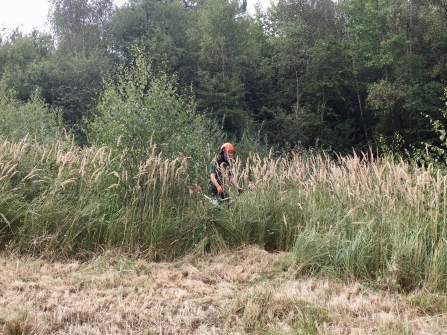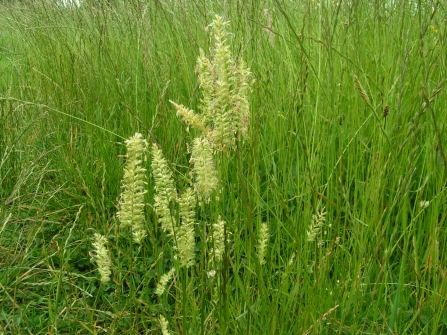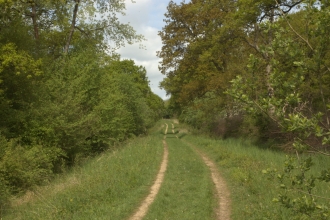The sun blazed down upon the volunteers as they met to complete the summer work at Finemere Wood. Work party after work party we have been cutting and raking grassy paths, rides, the drovers' track and finally tackling the ancient meadow within the wood, Long Close Meadow.
Yearly cutting of the meadow, once the flowering season is over, is important for the development of a species-rich grassland. It helps to keep the competitive plants, such as thistle and ragwort under control, allowing the more delicate flowers and grasses to flourish. It also stops the encroachment of scrub.
There is something for everyone: Brushcutters for those trained, who enjoy the thrill of power tools; scythes for those who prefer the calm, mesmeric Poldark approach to grass cutting; and rakes for those who are happy to clear up the mess that is created.




